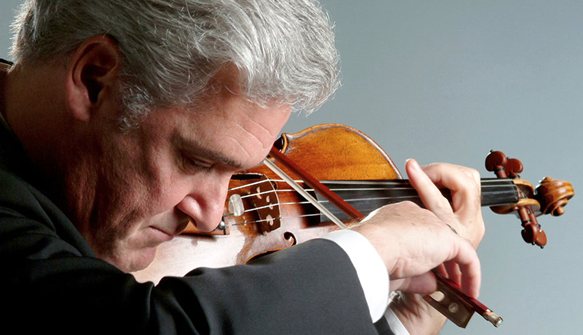
IVES’ FOURTH: WAY AHEAD OF ITS TIME
The epic Fourth Symphony of Charles Ives is an overwhelming anthology of Americana in a hodge-podge mix with European roots as seen from the distant future. You like dissonances? Charles Ives loved them.
The work is unique, bigger than life, with impinging musics, like collisions of galaxies. It’s an element that this musical visionary loved, dating back to his hearing two marching bands intersecting with rival selections on a city street. Always pushing the envelope. Moment to moment in this symphony from 1915-25, you’re never sure if the great experimentalist Ives will next be foreshadowing future musical innovations, or simply signing off on 19th century origins in New England.
Playing the 4th is a supreme challenge, to bring forth all the musical seasonings without just producing a sonic jumble (or jungle). Credit MTT and his S.F. Symphony for not just playing and recording it, but for including all the options. On Nov. 16 I counted 11 percussionists (on many snare drums), organ, three pianists, and enough brass to rouse the dead. On that overcrowded stage, the only thing missing was some referee to blow a whistle for illegal jabs of elbows.
I think Ives may have intended this signature work for the 22nd century. Or maybe just played in a command performance for the Maker.
You could call the Fourth to be America’s “Rite of Spring” counterpart as the portend of future progressive modernism. It opened the doors to polyrhythms (pursued by many), to polytonality (embraced by Milhaud), to elegant fugues alongside idiosyncratic brainstorms and exuberant dissonance. There’s a percussion ensemble under the stage, a duet of the lead pianist with a regressive back-row violinist—I’m not making this up—-and, unexpectedly, various crashes of unremitting brass.
It’s an instrumentalist’s dream. Among other exotica, there’s a quarter-tone piano (twice as many notes as the usual piano), bells, Indian drum, and “distant” groups of harp with 4-5 violins, saxophones, etc.
In what may have been a first, a second conductor (Christian Reif) seated beyond the podium is used intermittently to lead an orchestral subset seeking its own metric destiny.
The stunner of the 4th is the second (“Comedy”) movement, where Ives makes fun of himself with varied outbursts and outrages, and a snatch of the old song “Columbia, Gem of the Ocean” which was still current in America during World War Two.
MTT has finally done right by Ives. When the Symphony introduced the 4th to S.F. in 1968 under Seiji Ozawa, the choruses were omitted. A mistake—the singers form a perfect set of made-in-the-USA bookends to the massive 31-minute work, ending with the touching hymn “Nearer My God to Thee,” reportedly played by the salon orchestra aboard the Titanic as she was sinking in 1912, arguably the worst peacetime disaster in history. In addition, seeking optimum clarity for the complexity, to preview the Ives work, he bade the SFS Chorus sing six old hymns quoted in the Fourth.
At the conclusion, with the musicians taking bows, we had a first: The pianist pointing to the floor, to acknowledge the percussionists who had been playing below, out of sight but not out of earshot.
IVES ADDENDA—An oft-printed story, perhaps apocryphal, tells of the crotchety composer attending a concert in which a man made audible objections to the modern music. Whereupon Ives leapt up and called out, “Stand up, and take it like a man!”
The crusty New Englander Ives (1874-1954) spent most of his life as an insurance salesman. The editor for his many scores left in various stages of posthumous disarray was composer Lou Harrison, who lived in Aptos, CA for close to half a century.
The SFS plans include both of Ives’ last two symphonies, being recorded in concert: The 4th, and the less adventurous 3rd.
The concert, being repeated through Nov. 18, also featured the veteran Pinchas Zukerman as soloist in the Beethoven Violin Concerto.
S.F. SYMPHONY AND CHORUS in Charles Ives’ Symphony No. 4, Michael Tilson Thomas conducting; also Beethoven’s Violin Concerto. For SFS info: (415) 864-4400, or go online.